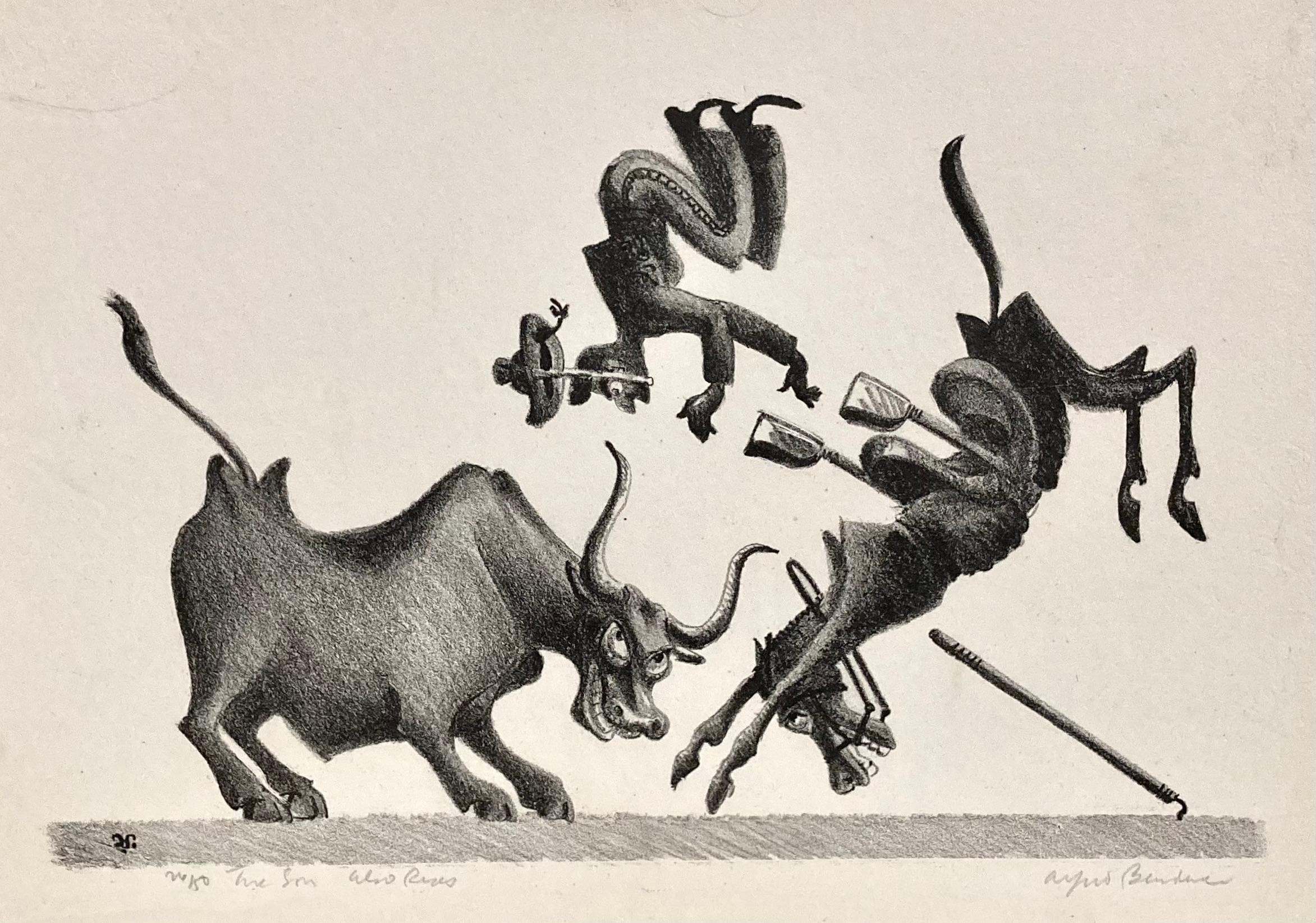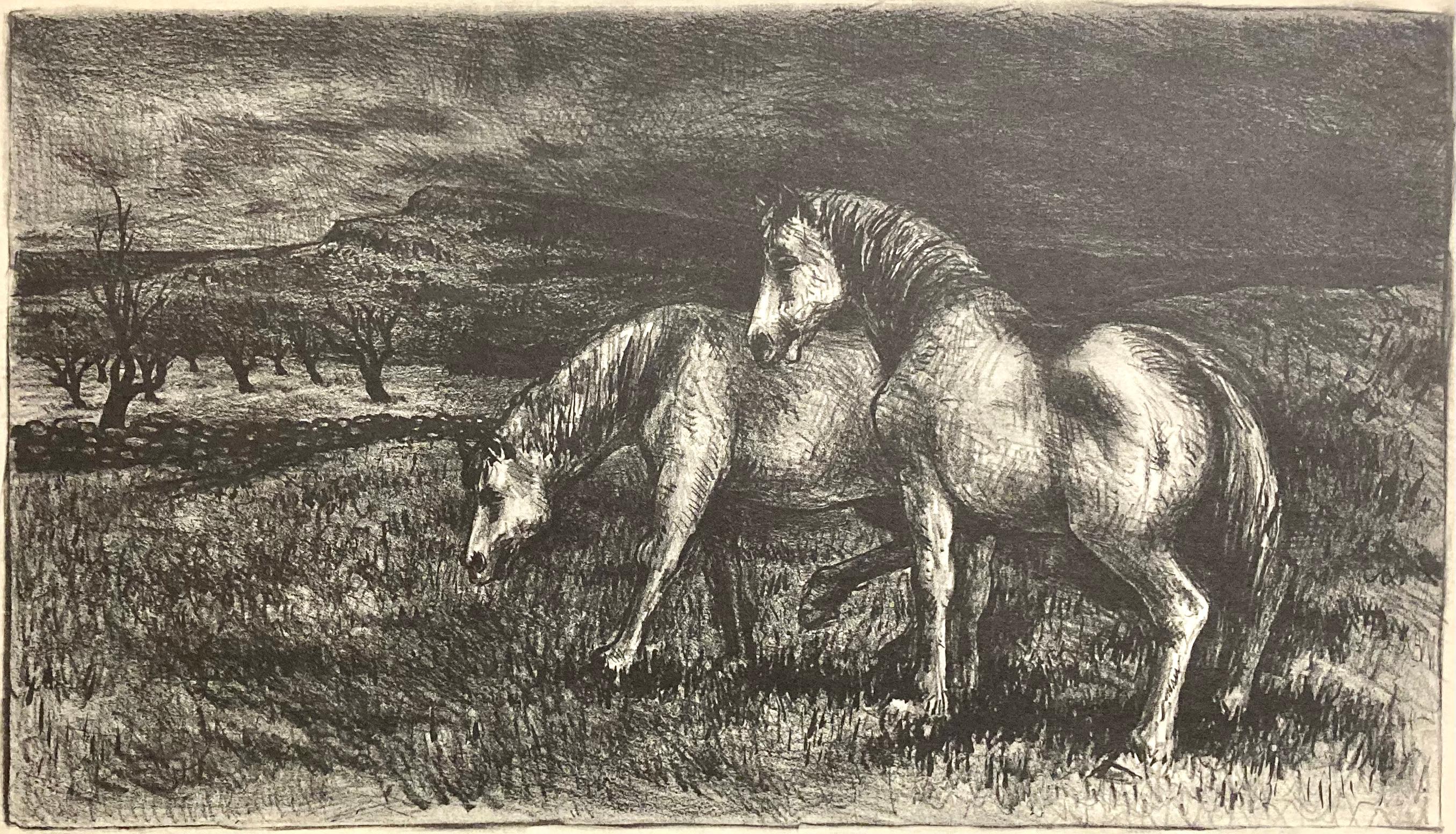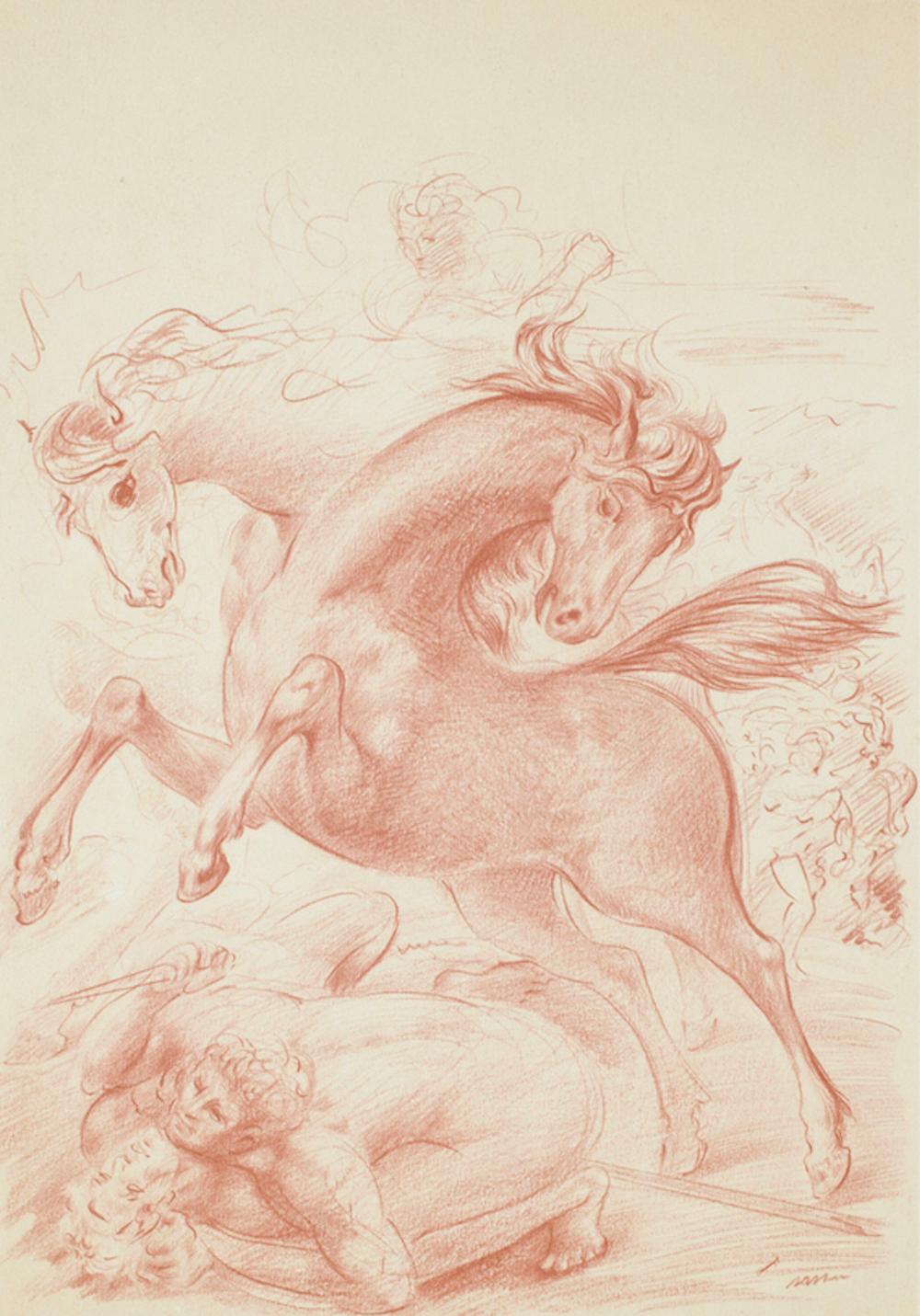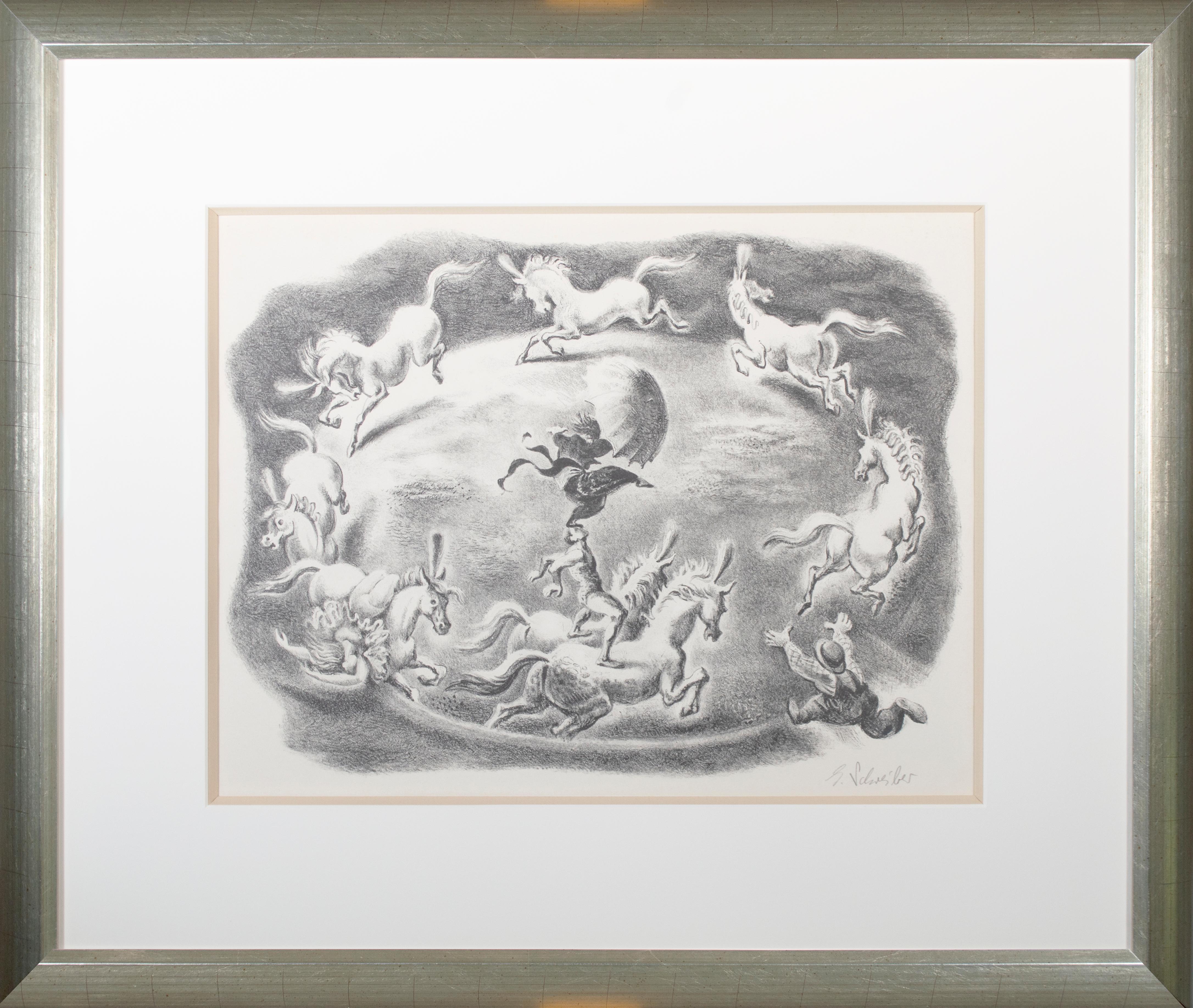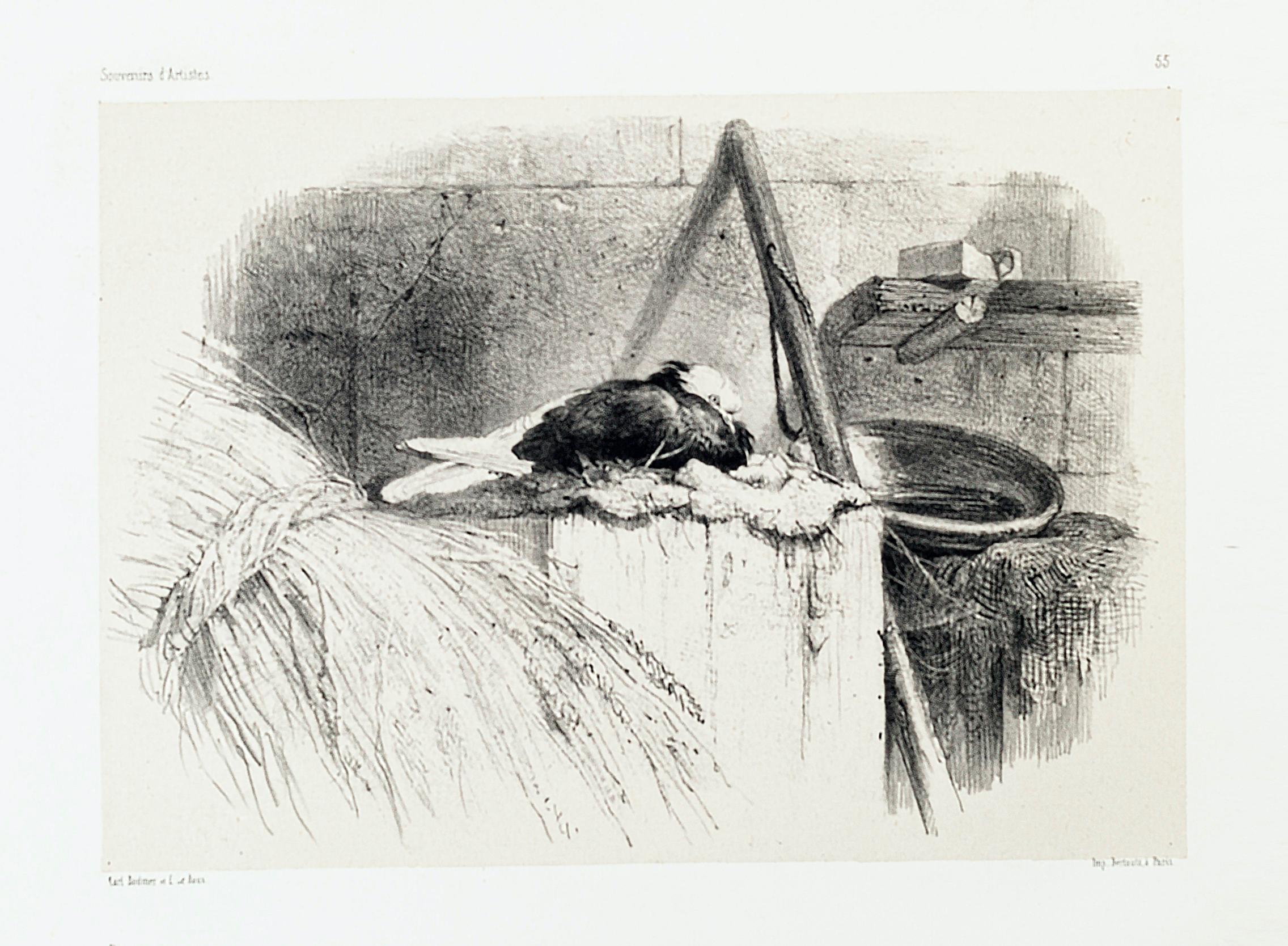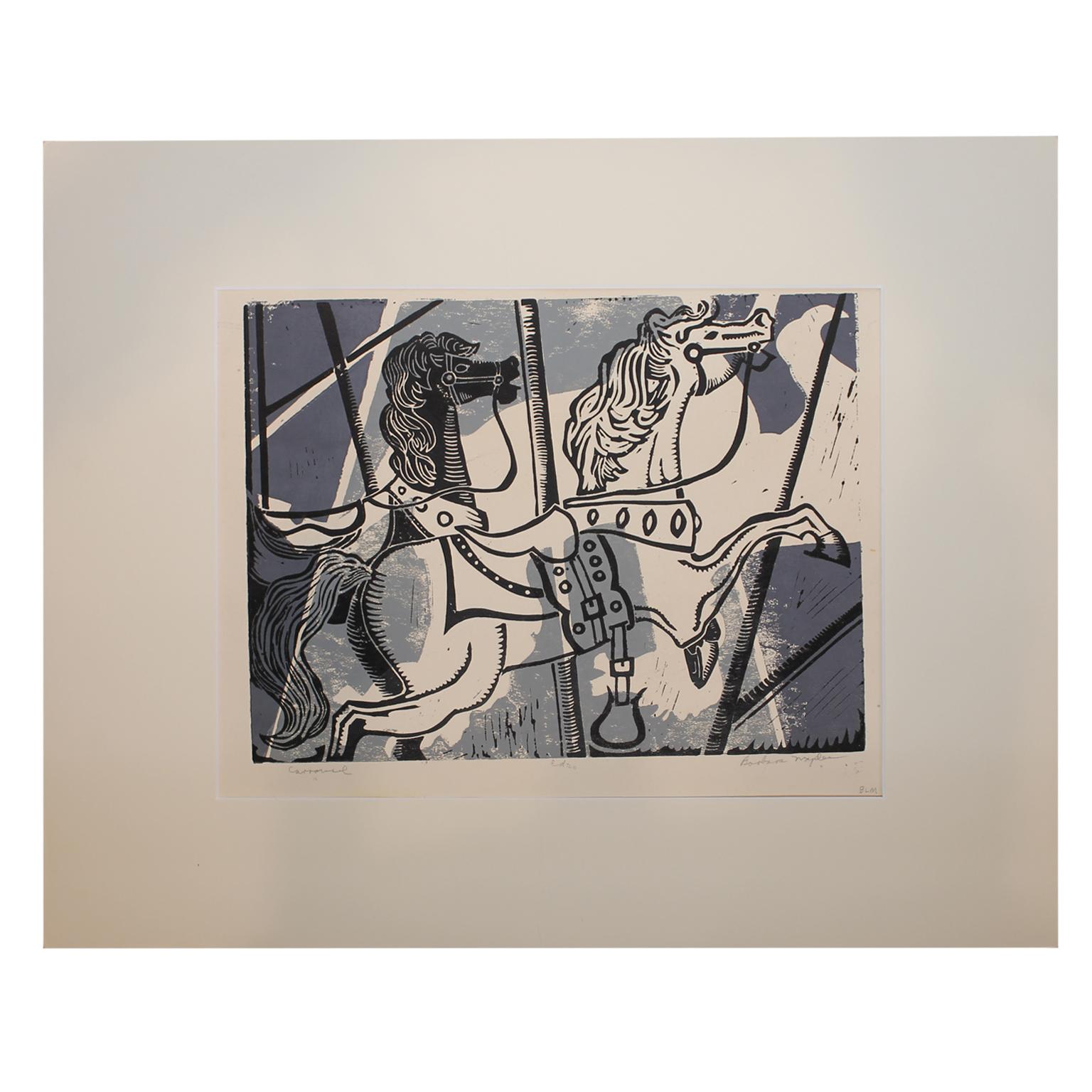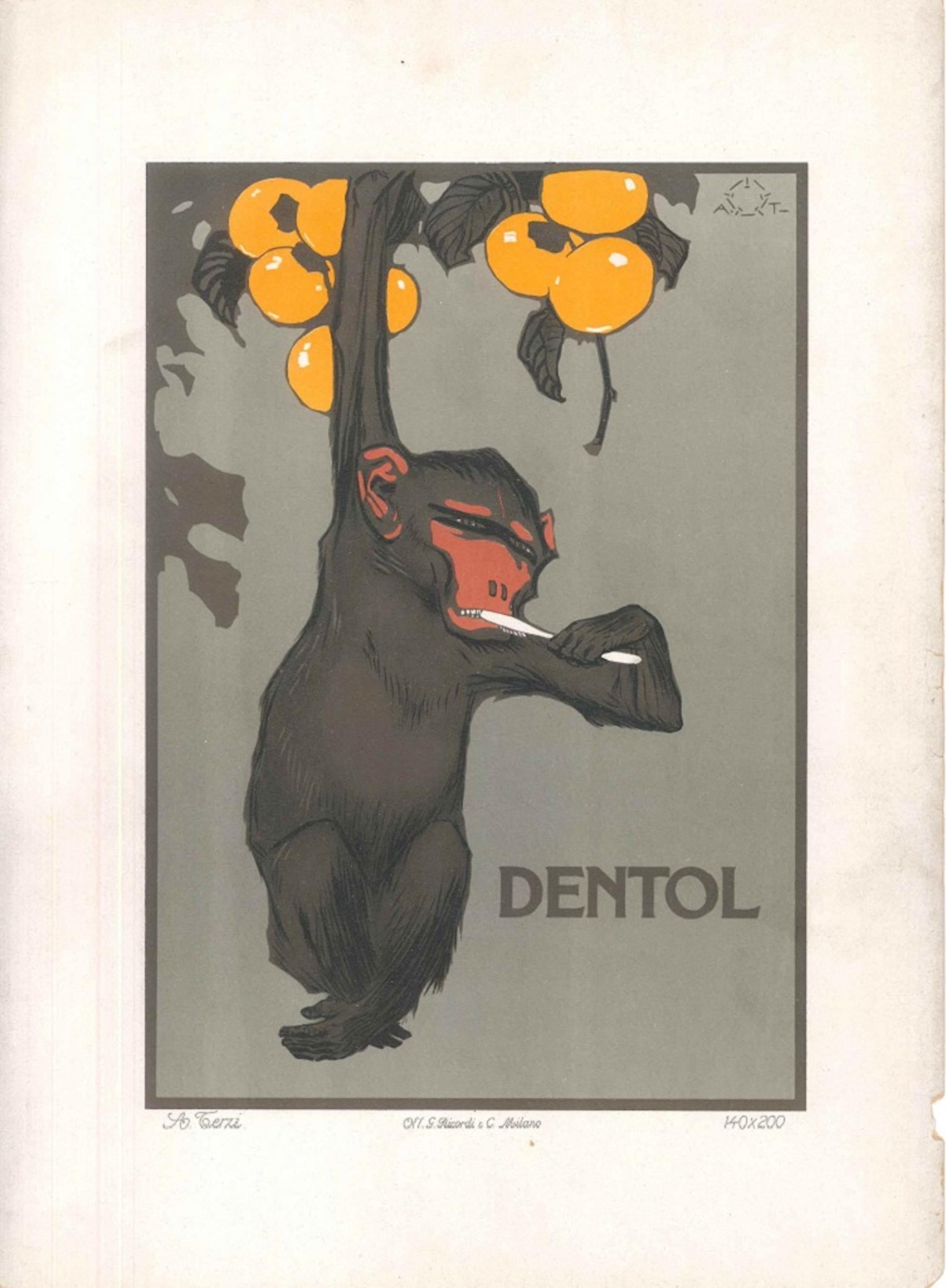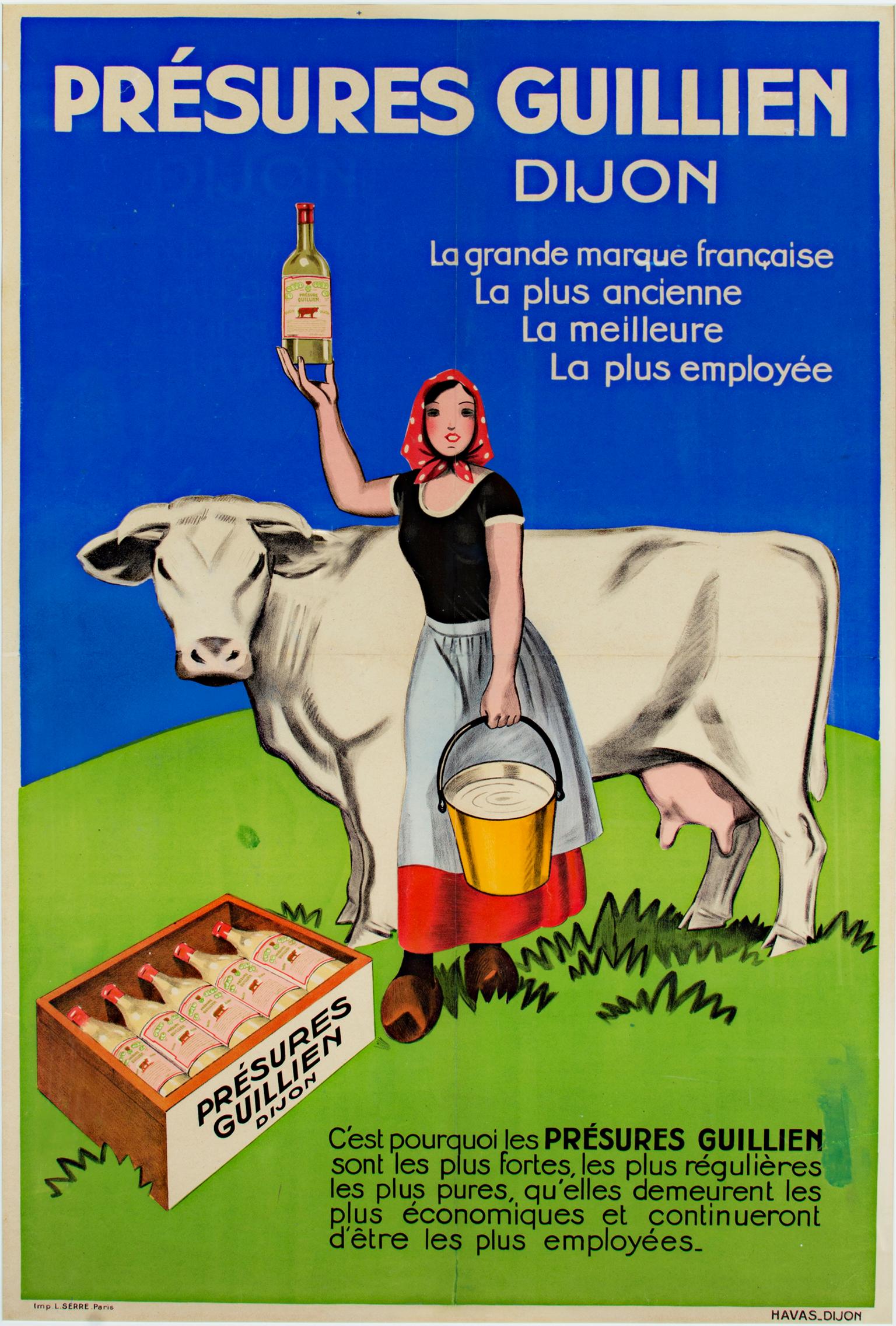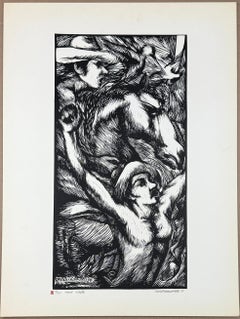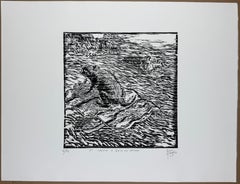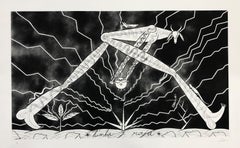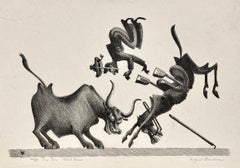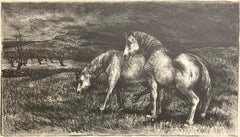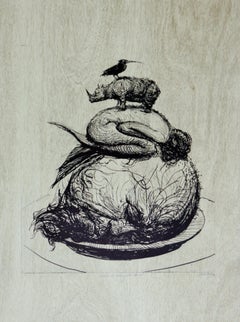
Dream of Chinese Sailor 2014 signed original lithograph woodblock 52x40in surrea
View Similar Items
Video Loading
Want more images or videos?
Request additional images or videos from the seller
1 of 9
Roberto FabeloDream of Chinese Sailor 2014 signed original lithograph woodblock 52x40in surrea2016
2016
About the Item
- Creator:Roberto Fabelo (1950, Cuban)
- Creation Year:2016
- Dimensions:Height: 52 in (132.08 cm)Width: 40 in (101.6 cm)
- Medium:
- Movement & Style:
- Period:
- Condition:
- Gallery Location:Miami, FL
- Reference Number:1stDibs: LU1854215456242
About the Seller
4.6
Gold Seller
Premium sellers maintaining a 4.3+ rating and 24-hour response times
Established in 2000
1stDibs seller since 2022
98 sales on 1stDibs
Authenticity Guarantee
In the unlikely event there’s an issue with an item’s authenticity, contact us within 1 year for a full refund. DetailsMoney-Back Guarantee
If your item is not as described, is damaged in transit, or does not arrive, contact us within 7 days for a full refund. Details24-Hour Cancellation
You have a 24-hour grace period in which to reconsider your purchase, with no questions asked.Vetted Professional Sellers
Our world-class sellers must adhere to strict standards for service and quality, maintaining the integrity of our listings.Price-Match Guarantee
If you find that a seller listed the same item for a lower price elsewhere, we’ll match it.Trusted Global Delivery
Our best-in-class carrier network provides specialized shipping options worldwide, including custom delivery.More From This Seller
View All"Our time", 1977 original linocut signed limited edition 24x18in Cuban Latin art
Located in Miami, FL
Ernesto Garcia Peña (Cuba, 1949)
'Our time" (from Porfolio Grabados Cubanos)', 1977
linocut print on paper Canson 320 g.
23.6 x 17.6 in. (59.8 x 44.6 cm.)
Edition of 200
Ref: GAE-309...
Category
1970s Contemporary Animal Prints
Materials
Paper, Engraving, Etching, Aquatint, Screen, Linocut
"The dog came out again" 2007 original woodcut signed 17x23 in. Mexican humor
By Fernando Aceves Humana
Located in Miami, FL
Fernando Aceves Humana (Mexico, 1969)
'Se volvió a salir el perro' (The dog came out again), 2007
woodcut on paper
17.6 x 23.1 in. (44.5 x 58.5 cm.)
Edition of 10
ID: ACE-103
Unframed
Category
Early 2000s Contemporary Animal Prints
Materials
Paper, Woodcut
"Under the skin IV" Mexican artist large mixed media woodcut etching serigraph
Located in Miami, FL
Amador Montes (Mexico, 1975)
'Debajo de la piel IV', 2021
Mixed media, etching, aquatint woodcut on paper
49 x 118 in. (124 x 300 cm.)
Edition of 30
Ref...
Category
2010s Contemporary Figurative Prints
Materials
Paper, Ink, Etching, Aquatint, Screen, Woodcut
"Tumba y Raja" 2019 (see video) Signed Original Large Engraving Cuban Art Print
By Jose Bedia
Located in Miami, FL
"Tumba y Raja', is a term in Spanish that colloquially refers to an uncontrollable force that "knocks something down and rips it apart". In this case it refers to the Nkisi (magic po...
Category
2010s Contemporary Animal Prints
Materials
Engraving
Sergio Hernández, 'La Mantis', 2015, Woodcut, 40.9x53.5 in
By Sergio Hernández
Located in Miami, FL
"Sergio Hernández (Mexico, 1957)
'La Mantis', 2015
woodcut on paper Velin Arches 300 g.
41 x 53.6 in. (104 x 136 cm.)
Edition of 70
ID: HER-190"
Category
2010s Contemporary Figurative Prints
Materials
Paper, Woodcut
"Drawing class: first day", 2007 Mexican humor original woodcut conceptual art
By Fernando Aceves Humana
Located in Miami, FL
Fernando Aceves Humana (Mexico, 1969)
'Clase de dibujo primer día', 2007
woodcut on paper
17.8 x 22.5 in. (45 x 57 cm.)
Edition of 20
ID: ACE-102
Unframed
Category
Early 2000s Contemporary Animal Prints
Materials
Paper, Woodcut, Ink
You May Also Like
Alfred Bendiner, The Son also Raises
By Alfred Bendiner
Located in New York, NY
No matter the seriousness (or lack thereof) of the subject, everything is always beautifully drawn on the lithographic stone by Bendiner.
Here a bull fight has gone amiss. Perhaps ...
Category
1940s American Modern Animal Prints
Materials
Lithograph
Alfred Bendiner, On Vacation
By Alfred Bendiner
Located in New York, NY
No matter the seriousness (or lack thereof) of the subject, everything is always beautifully drawn on the lithographic stone by Bendiner.
In this 'Day at the Beach' scene Bendiner h...
Category
1940s American Modern Animal Prints
Materials
Lithograph
Reginald Wilson, Horses
By Reginald Wilson
Located in New York, NY
Although this work is titled Horses. It nice to think it could be (Horses in a Field in Woodstock, NY), but it was printed by Will Barnet at the Art Students League, about 1938, and Wilson, who visited Woodstock with Arnold Blanche...
Category
1930s American Modern Animal Prints
Materials
Lithograph
Le Christ a l'Horloge, Paris
By Marc Chagall
Located in Missouri, MO
Marc Chagall
"Le Christ a l'Horloge, Paris" (Christ in the Clock) 1957 (M. 196)
Color Lithograph on Arches Wove Paper
Signed in Pencil "Marc Chagall" Lower Right
Initialed "H.C." (Hors Commerce) Lower Left, aside from numbered edition of 90
*Floated in Gold Frame with Linen Matting, UV Plexiglass
Sheet Size: 18 3/4 x 14 3/4 inches (47.5 cm x 38 cm)
Image Size: 9 3/4 x 8 1/2 inches
Framed Size: 28.5 x 24.25 inches
Marc Chagall was a man of keen intelligence, a shrewd observer of the contemporary scene, with a great sympathy for human suffering. He was born on July 7, 1887 in Vitebsk, Russia; his original name was Moishe Shagal (Segal), but when he became a foremost member of the Ecole de Paris, he adopted French citizenship and the French spelling of his name. Vitebsk was a good-sized Russian town of over 60,000, not a shtetl. His father supported a wife and eight children as a worker in a herring-pickling plant.
Sheltered by the Jewish commandment against graven images, the young Chagall never saw so much as a drawing until, one day, he watched a schoolmate copying a magazine illustration. He was ridiculed for his astonishment, but he began copying and improvising from magazines. Both Chagall's parents reluctantly agreed to let him study with Yehuda Pen, a Jewish artist in Vitebsk. Later, in 1906, they allowed their son to study in St. Petersburg, where he was exposed to Russian Iconography and folk art. At that time, Jews could leave the Pale only for business and employment and were required to carry a permit. Chagall, who was in St. Petersburg without a permit, was imprisoned briefly.
His first wife, Bella Rosenfeld, was a product of a rich cultivated and intellectual group of Jews in Vitebsk. Chagall was made commissar for the arts for the area, charged with directing its cultural life and establishing an art school. Russian folklore, peasant life and landscapes persisted in his work all his life. In 1910 a rich patron, a lawyer named Vinaver, staked him to a crucial trip to Paris, where young artists were revolutionizing art. He also sent him a handsome allowance of 125 francs (in those days about $24) each month. Chagall rejected cubism, fauvism and futurism, but remained in Paris. He found a studio near Montparnasse in a famous twelve-sided wooden structure divided into wedge-shaped rooms. Chaim Soutine, a fellow Russian Jew, and Modigliani lived on the same floor. To Chagall's astonishment, he found himself heralded as one of the fathers of surrealism. In 1923, a delegation of Max Ernst, Paul Eluard and Gala (later Salvador Dali's wife) actually knelt before Chagall, begging him to join their ranks. He refused.
To understand Chagall's work, it is necessary to know that he was born a Hasidic Jew, heir to mysticism and a world of the spirit, steeped in Jewish lore and reared in the Yiddish language. The Hasidim had a special feeling for animals, which they tried not to overburden. In the mysterious world of Kabbala and fantastic ancient legends of Chagall's youth, the imaginary was as important as the real. His extraordinary use of color also grew out of his dream world; he did not use color realistically, but for emotional effect and to serve the needs of his design. Most of his favorite themes, though superficially light and trivial, mask dark and somber thoughts. The circus he views as a mirror of life; the crucifixion as a tragic theme, used as a parallel to the historic Jewish condition, but he is perhaps best known for the rapturous lovers he painted all his life. His love of music is a theme that runs through his paintings.
After a brief period in Berlin, Chagall, Bella and their young daughter, Ida, moved to Paris and in 1937 they assumed French citizenship. When France fell, Chagall accepted an invitation from the Museum of Modern Art to immigrate to the United States. He was arrested and imprisoned in Marseilles for a short time, but was still able to immigrate with his family. The Nazi onslaught caught Chagall in Vichy, France, preoccupied with his work. He was loath to leave; his friend Varian Fry rescued him from a police roundup of Jews in Marseille, and packed him, his family and 3500 lbs. of his art works on board a transatlantic ship. The day before he arrived in New York City, June 23, 1941, the Nazis attacked Russia. The United States provided a wartime haven and a climate of liberty for Chagall. In America he spent the war years designing large backdrops for the Ballet.
Bella died suddenly in the United States of a viral infection in September 1944 while summering in upstate New York. He rushed her to a hospital in the Adirondacks, where, hampered by his fragmentary English, they were turned away with the excuse that the hour was too late. The next day she died.
He waited for three years after the war before returning to France. With him went a slender married English girl, Virginia Haggard MacNeil; Chagall fell in love with her and they had a son, David. After seven years she ran off with an indigent photographer. It was an immense blow to Chagall's ego, but soon after, he met Valentine Brodsky, a Russian divorcee designing millinery in London (he called her Fava). She cared for him during the days of his immense fame and glory. They returned to France, to a home and studio in rustic Vence. Chagall loved the country and every day walked through the orchards, terraces, etc. before he went to work.
Chagall died on March 28, 1985 in the south of France. His heirs negotiated an arrangement with the French state allowing them to pay most of their inheritance taxes in works of art. The heirs owed about $30 million to the French government; roughly $23 million of that amount was deemed payable in artworks. Chagall's daughter, Ida and his widow approved the arrangement.
Written and submitted by Jean Ershler Schatz, artist and researcher from Laguna Woods, California.
Sources:
Hannah Grad Goodman in Homage to Chagall in Hadassah Magazine, June 1985
Jack Kroll in Newsweek, April 8, 1985
Andrea Jolles in National Jewish Monthly Magazine, May 1985
Michael Gibson...
Category
1950s Modern Figurative Prints
Materials
Lithograph
Price Upon Request
Horses - Original Lithograph by Aligi Sassu - 1965
Located in Roma, IT
Horses is an original lithograph, realized by Aligi Sassu in 1965, Hand-signed on the plate. The state of preservation of the artwork is excellent.
Sheet dimension: 35x 25 cm.
The...
Category
1960s Modern Animal Prints
Materials
Lithograph
Stilt-Walking Shepherds - Original Lithograph - 1860
Located in Roma, IT
Image dimensions 20.5 x 15.3 cm.
Stilt-Walking Shepherds is a fascinating color lithograph realized by an anonymous artist in 1860.
Dated 1860 bottom left, p. 23.
On the lower le...
Category
1860s Modern Animal Prints
Materials
Lithograph
Recently Viewed
View AllMore Ways To Browse
Riccardo And Pietro Ferro Glass
Richard Orlinski Panther
Rio Branco
Robert Mitchell Chairs
Rogers Statues
Roman Oil Painting 16th 17th 18th Century
Rosamond Brown
Saint Bonaventure
Sara Pope
Scott Leighton
Serpentine Graphite
Siren Charm
Sly Low
Snow Monkey
Stan Davis
Stanislaw Wysocki
Sultan Big Poppies
The Last Days Of Napoleon
